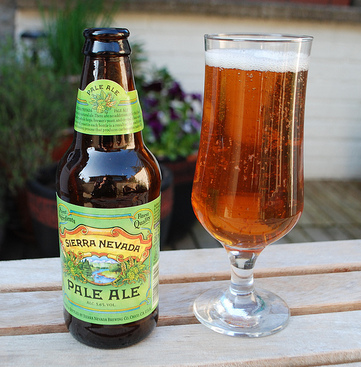Grasping the Craft of Purification: a Deep Dive Into Distillery Traditions
Checking out the detailed art of purification reveals a globe soaked in time-honored customs that have actually formed the spirits we enjoy today. From the ancient beginnings of distillation methods to the contemporary advancement of distillery equipment, each step in the process carries with it a rich tapestry of background and expertise. As we look into the delicate equilibrium of modern versus traditional distilling practices and reveal the value of crucial components, a much deeper understanding emerges of the profound effect distillery traditions have on the spirits we relish.
Beginnings of Purification Techniques
The growth of distillation techniques has an abundant history that traces back to old human beings. The idea of dividing parts based on their different boiling factors laid the structure for the sophisticated distillation procedures we have today.
The earliest proof of distillation dates back to around 3000 BC in Mesopotamia, where clay pots were made use of to distill fragrances and aromatic oils. The Egyptians better advanced these techniques, utilizing purification for embalming methods and medicinal functions. The Greeks, notably figures like Aristotle and Hippocrates, added to the academic understanding of distillation.
Gradually, distillation spread to areas like India, China, and the Center East, each society including its special touch to the craft. The development of distillation methods proceeded with the Middle Ages and the Renaissance, ultimately leading to the diverse range of distillation processes used in contemporary distilleries worldwide.
Evolution of Distillery Devices

With advancements in innovation and a much deeper understanding of the purification process, contemporary distilleries now use a variety of innovative devices to generate spirits of the finest. Today, purification tools consists of column stills, reflux stills, and hybrid stills, each developed to satisfy certain purification demands. These modern stills provide better temperature law, boosted distillation precision, and higher efficiency in separating alcohol from pollutants.
Along with stills, distilleries now make use of advanced condensers, fermenters, and filtering systems to additional fine-tune the extract. The evolution of distillery equipment continues to play a crucial function fit the varied range of spirits readily available out there today.
Traditional Vs. Modern Distilling Practices
Alternatively, contemporary distilling techniques utilize cutting-edge technology and technology to enhance manufacturing procedures and enhance uniformity. Automated systems, digital controls, and advanced equipment enable contemporary distilleries to create spirits much more efficiently and with better precision.
While traditional distilling techniques are cherished for their heritage and the special tastes they generate, modern-day approaches supply advantages in terms of scalability, quality control, and sustainability. By including clinical developments and modern-day engineering, distillers can enhance production, minimize waste, and fulfill the demands of today's market better. Ultimately, the selection in between traditional and modern-day distilling methods frequently relies on the distillery's objectives, worths, and target audience.
Trick Active Ingredients in Purification Process
Within the craft of distillation, the selection of key ingredients plays a critical duty in determining the taste profile and top quality of the spirits created. The primary ingredients used in the purification procedure are Read More Here typically water, yeast, and a fermentable resource such as grains, fruits, or sugarcane.
Water is an essential component as it not only dilutes the alcohol content to a tasty degree yet additionally affects the overall mouthfeel and texture of the spirit. The quality and mineral material of the water made use of can considerably influence the last product.
Yeast is another necessary ingredient that converts the sugars existing in the fermentable source into alcohol through the procedure of fermentation. Different stress of yeast can produce differing flavors and aromas, adding to the distinct qualities of the spirit.

Effect of Distillery Traditions on Spirits
The impact of historical distillery traditions on spirits prolongs past the option of key active ingredients, forming the very significance and personality of the final distilled items (Breweries in Galveston Texas). These practices, passed down via generations, play a critical function in specifying the special taste accounts and high qualities that distinguish one spirit from an additional
Distillery customs encompass a vast array of practices, from the details methods used in distillation to the selection old procedures employed. For instance, using traditional copper pot stills in scotch manufacturing is believed to pass on particular flavors and features that are highly valued by lovers. The aging of spirits in oak barrels, a practice deeply rooted in distilling customs, adds to the development of complex fragrances and tastes over time.

Final Thought
In final thought, the traditions of distillation have a rich background that has actually evolved gradually. From the beginnings of purification techniques to the contemporary methods, the influence of distillery practices on spirits is undeniable. By comprehending the crucial active ingredients in the distillation process and the evolution of distillery devices, one can value the workmanship and virtuosity that goes right into creating high-grade spirits. Distillery traditions play an important function in forming the spirits market and protecting the heritage of purification practices.
Throughout the background of purification, the devices utilized in distilleries has gone through considerable development to improve effectiveness and high quality of the distillation process.With advancements in technology and a much deeper understanding of the purification process, modern-day distilleries now utilize a variety of innovative tools to create spirits of the greatest quality. Today, purification tools includes column stills, reflux stills, and hybrid stills, each designed to provide to specific distillation needs. From the beginnings of distillation techniques to the modern-day methods, the impact of distillery practices on spirits is indisputable. Distillery customs play a vital duty in shaping the spirits industry and maintaining the heritage of distillation techniques.